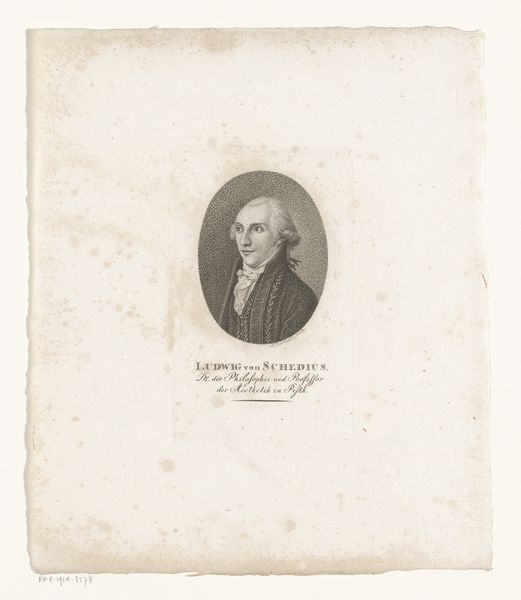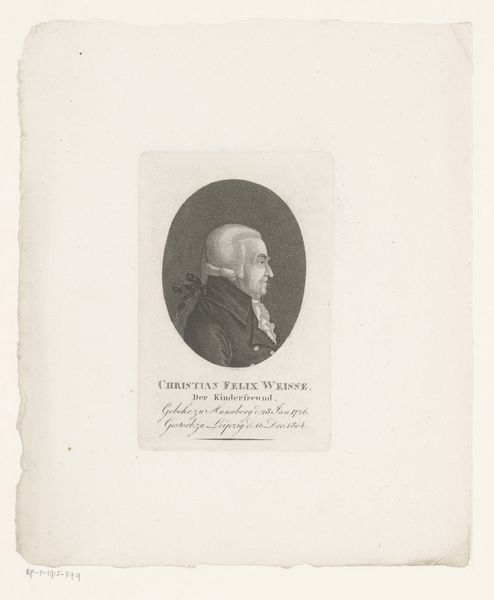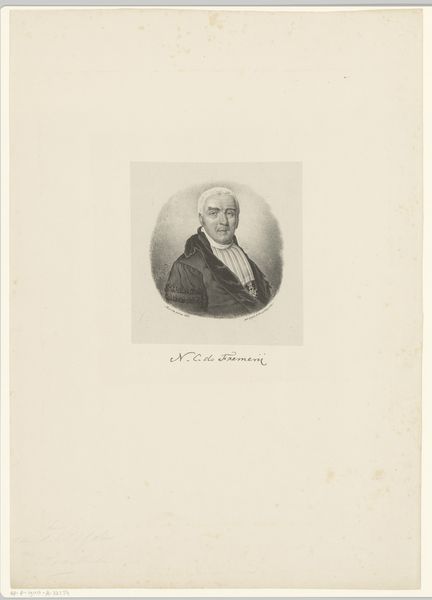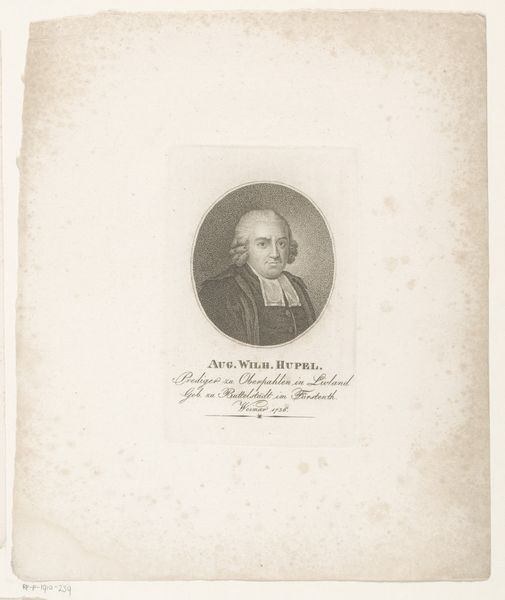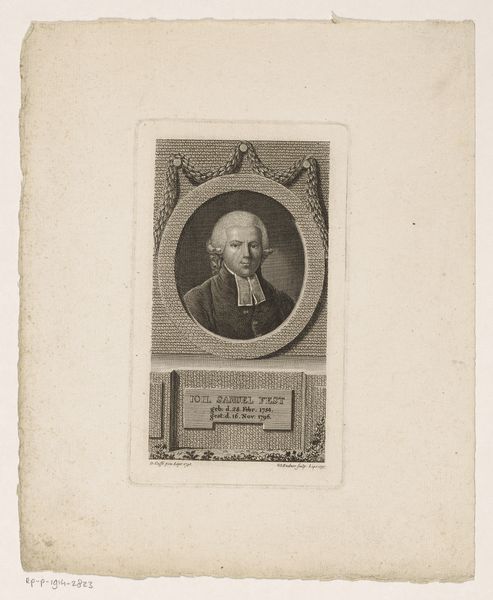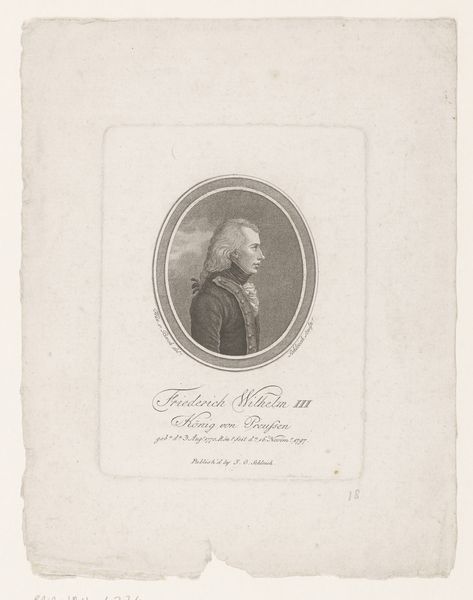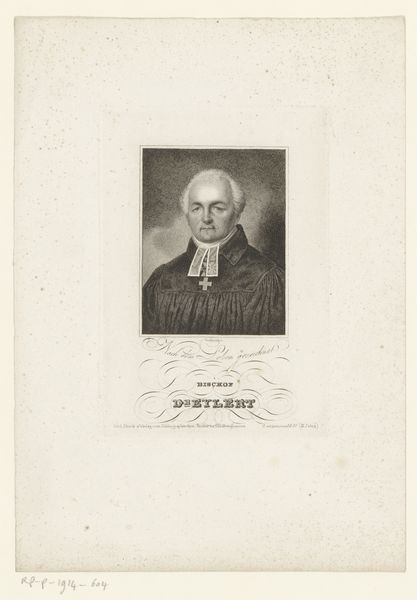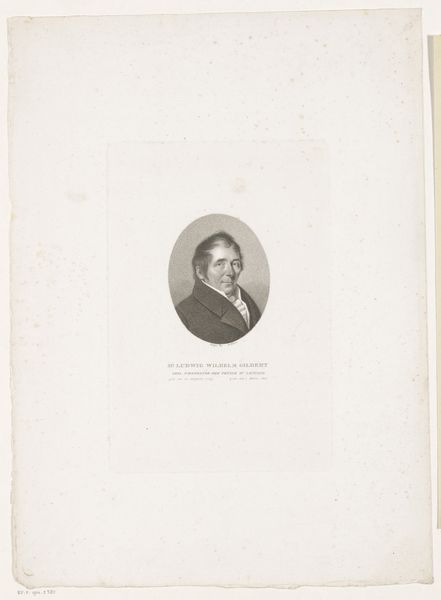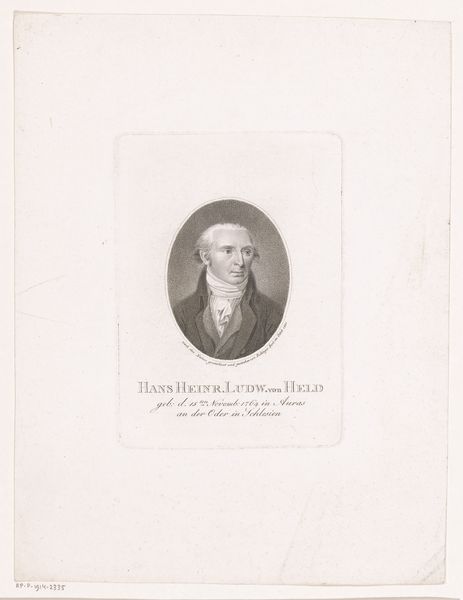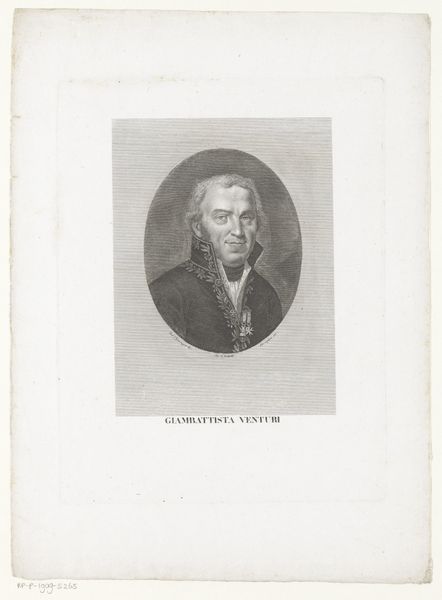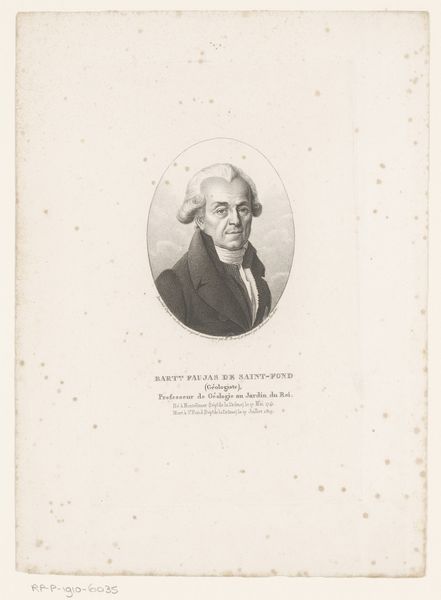
print, paper, engraving
#
portrait
#
neoclacissism
#
aged paper
# print
#
light coloured
#
old engraving style
#
paper
#
archive photography
#
historical photography
#
engraving
#
monochrome
Dimensions: height 197 mm, width 140 mm
Copyright: Rijks Museum: Open Domain
Curator: This rather austere image is a print from 1809 titled "Portret van Hermannus Pauw," housed right here at the Rijksmuseum. It's an engraving on paper depicting Jan Willem Caspari. Editor: It has this striking quality, doesn’t it? Almost a clinical observation, especially with that intense gaze emerging from the otherwise soft, oval frame. I'm interested in this figure and how that specific historical placement affects this portrayal. Curator: It definitely carries that Neoclassical feel. The print’s monochrome and relatively simple composition lends itself to this, situating Pauw almost as a figure of reason during a time of societal upheaval in the wake of revolution. Editor: Yes, exactly, because of the French Revolution at this moment portraiture became more complicated than earlier times, right? Was Caspari perhaps engaging with this kind of enlightenment-era shift, creating images that had some political weight? In the church, there was such political struggle at this time between conservative and liberal voices, it would make sense to explore that! Curator: Precisely. This particular image serves a purpose—not just memorializing, but solidifying an image of piety and perhaps even strength during this era. Notice that it almost seems designed to align Pauw to religious history that has specific political ideas to teach us even now. Editor: The text at the bottom also provides insights in this context. In the context of Dutch society at this time—such emphasis on Godliness feels like Caspari is really aware of what statements like that might do. Curator: It does makes you wonder how his audience understood Pauw’s importance, not only during his life but also afterwards, given the choice to immortalize him like this. This tension speaks volumes about the purpose of portraits as historical and social records. Editor: Definitely a lot to ponder about the weight and role this man must have had during his time! And how we today should look critically upon a simple portrait of that time.
Comments
No comments
Be the first to comment and join the conversation on the ultimate creative platform.
